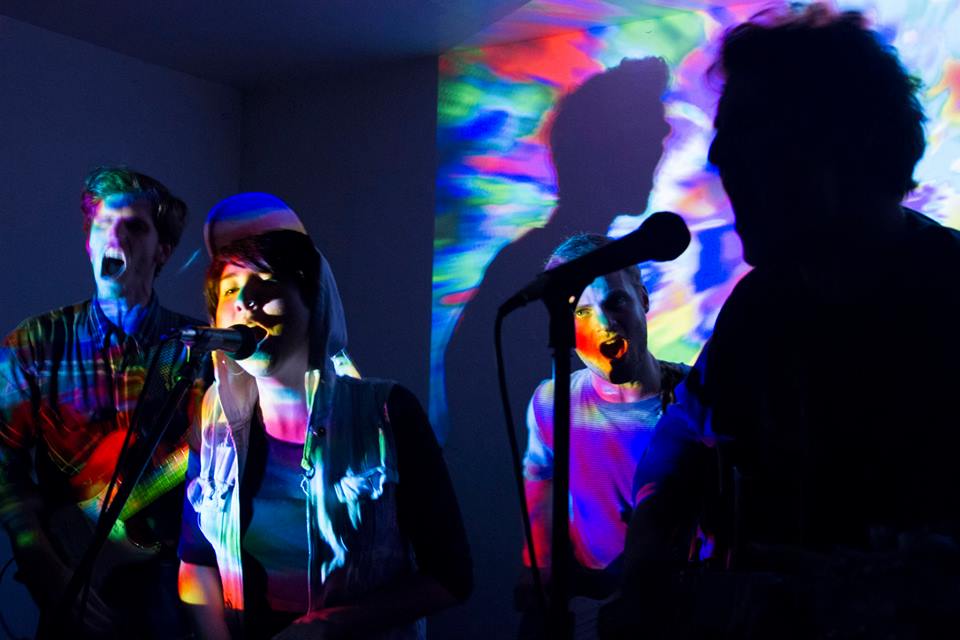Student Bands Hit the Road for Stereocure Showcase
The members of PEAKS serenade a Williamsburg crowd with their jazz, folk and rock-inspired sound. The five-piece ensemble combined their diverse musical backgrounds to warm up the crowd for the Stereocure showcase.
November 1, 2013
October marked the beginning of the Stereocure showcase, a multi-show road trip demonstrating the label’s talent and creative diversity. Stereocure, an LA-based label, boasts more than 10 acts from several different locations along the East Coast and in the Midwest, and is currently operated by Oberlin College senior Gabe Kanengiser, College senior Adam Hirsch, Conservatory senior Myles Emmons and NYU student Jordan Alper. The acts traveled from Oberlin to Clark University, Bard College, Vassar College, Wesleyan University, Philadelphia and Brooklyn, where I caught them toward the end of the showcase. The sounds of Stereocure’s artists range from sun-dazed, jazzed-out rock, epitomized by Peaks, to A Sol Mechanic’s hip-hop, to the avant-garde, with artists like Kuh-Lida and Novelty Daughter taking the audience on a ride to sonic wonderland.
On Oct. 24, the Stereocure showcase arrived at the Williamsburg concert venue and coffee shop known as Muchmore’s. Four of the acts played to a full house: Peaks, Novelty Daugher, A Sol Mechanic, and Kuh-Lida – all of whom shared the spotlight with Real Boy Digital, a video projection team composed of Emmons, double-degree senior Devin Frenze and College senior Dan Friedman, who provided mesmerizing responsive backgrounds and ceiling projections. The diversity of the label’s lineup had an interesting effect on the audience, pushing them to adapt to the constantly changing sonic aesthetic. At a Stereocure event, one can expect to sway, freestyle, try out some footwork or even twerk, all in one night.
As Peaks warmed up the crowd at the Williamsburg event, people were still flooding in. Composed entirely of Oberlin students, Peaks’s jazz-, folk- and rock-inspired sound has had a strong presence on campus, and their performances have successfully fused these different musical elements into a collaborative and progressive style. Lead singer and College senior Rachel Ishikawa, whose voice adds a unique dreamy quality to the music, and other band members — College senior Tom Kearney, College senior Peter Hartmann, double-degree senior Nate Mendelsohn and Duncan Standish, OC ’13 — use their different influences to create original grooves and truly heartwarming music that held the Muchmore’s audience captivated.
As Novelty Daughter, Wesleyan’s Faith Harding combined beautifully textured keyboard and piano progressions with compelling and creative beats, topping off these effects by layering her powerful voice over the tracks. Watching her perform alone, with only a synth and a soundboard onstage for company, was a lot of fun; an incredibly animated singer, Harding never showed an ounce of self-doubt, while at the same time pushing herself vocally with every performance. By fusing her jazz-like singing with simple, yet soft and poignant synth textures, Novelty Daughter evokes memories of ’90s trip-hop, calling to mind bands like Zero 7 and Massive Attack, while at the same time infusing that classic and nostalgic sound with a contemporary sensibility that reverberated throughout the room.
Mid-show, the Brooklyn crowd migrated outside for a cigarette break before returning to the venue for David Blazer’s set, the one-man machine known as A Sol Mechanic. A West Coast artist, Blazer’s instrumentals tore down the house with their essential West Coast textures, like deep sub bass and heavily reverberating samples. Vastly different from Novelty Daughter’s ballads, A Sol Mechanic got the crowd moving. At one point, a few freestyle cyphers even broke out, when people were so inspired by the luscious hip-hop instrumentals that they just had to spit a verse over them.
Last but certainly not least, Kuh-Lida, a.k.a. Emmons, took the stage to play his jaw-dropping avant-pop set. Kuh-Lida’s sound tends to leave you wondering how someone could possibly make this kind of music, and sometimes prompts you to ask yourself whether you’re tripping or being consumed by your computer as you experience it. His hectic and sometimes overwhelmingly busy tracks combine elements of hip-hop, footwork, R&B and his own production style, while at the same time completely embodying the idea of the glitch aesthetic. His tracks meld into one another, constantly breaking down and rebuilding as if each note was a Lego brick in the construction of every song.
While the Stereocure family gave Brooklyn a taste of their music, the Real Boy Digital team doubled down with the visuals. Acting as a ribbon that tied together the different musical acts, Real Boy’s dual projection setup created a vital link between visual and musical aesthetics by inventing a system of synchronized, highly responsive visuals. The projections changed with every sonic peak and trough, constantly shifting in color scheme and arrangement. Paired with different musical acts, the visuals tied together the performances of a folk group to a hip-hop artist and to avant-pop chaos. In this sense, Stereocure is not just a music label, but a highly collaborative and creative group of individuals who seek to push their own abilities, while at the same time contributing to their own unique genres of sound.
























